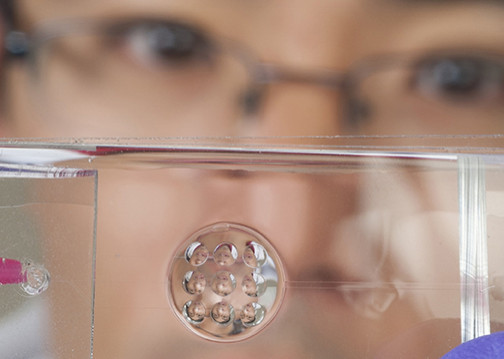Bug-Eye Lens Built By Scientists Combines Human And Insect Vision To Capture Detailed Images

Engineers at Ohio State University have invented a lens that combines the visual strengths of both human and insect eyes.
The lens -- which is able to focus like a human eye but also offers wide-angle views like the ones insects experience -- produces extremely detailed images that could provide benefits for both the mobile phone and health industries, the team said in a press release.
"Our eye can change focus. An insect eye is made of many small optical components that can't change focus but give a wide view. We can combine the two," Yi Zhao, associate professor of biomedical engineering and ophthalmology at Ohio State, said. "What we get is a wide-angle lens with depth of field."
The lens could allow smart phones to capture high-quality images much like those of more pricey, larger cameras. It could also decrease the number of moving parts within cameras, greatly reducing reliability issues with the devices, Discovery News reports. In order for the fluid-filled lens to work, fluid moves in an out of dome-shaped pockets that make up the singular, larger lens. The lens mimics the compound eye of an insect, with tiny channels sending fluid to each of the pockets.
The fluid flowing in an out of the lens allowed scientists to manipulate its shape and focus. Scientists were also able to move the focused area of the lens around. This could be extremely helpful to doctors performing surgeries that require precise views of microscopic objects -- sometimes at varying distances.
"With our lens, doctors could get the wide-angle view they need, and still be able to judge the distance between the lens and tissue. They could place instruments with more confidence, and remove a tumor more easily, for example," Zhao said.
The lens' ability to change shape to focus is similar to the way muscles in the eyes work. They either stretch or tighten the eyes lens depending on the focal point of an image, HNGN reports. According to Zhao, though, more work will be completed to make the lens' design more easily used in electronics. One solution may involve using lenses fabricated of piezoelectric material. These would rely on currents to direct their changes in shape, removing the need for fluids.
© Copyright IBTimes 2024. All rights reserved.
Join the Discussion






















